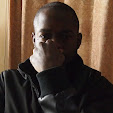Idea to Market: Day 1 - Visiting KNH
Between 9th and 16th of February 2018, I attended a workshop whose theme was "Idea to Market". My initial plan was to blog about the workshop every single day after the sessions, but the sessions were intense and I was drained at the end of the day. So now that it's all over and I have a more relaxed schedule, I'll be doing a blog a day to review what each day was all about, starting today.
Day 1 was on Friday, 9th February 2018 and we were hosted at Kenyatta National Hospital - KNH. This was the first day of what was to be an intensive 5 day workshop. The workshop is centred around techniques that would enable the development of ideas surrounding Maternal, New Born and Child health, and later on actuating these ideas and taking them to market.
Personally, this training was of great interest to me because so many ideas tend to fall on the way side because we typically don't know how to transition our ideas at times into marketable products.
The day we spent at KNH was kind of a preamble to the actual training, a way to give context to the training that would beginning in earnest the following week.
The training was conducted by two instructors from the Philips foundation, the instructors are based in the Netherlands. However, the training is a collaboration between Philips, KNH, Fablab Makerspace Nairobi, Gearbox, and UNICEF.
As we were being introduced to the facilitators of the workshop, one thing that was stated that really struck a chord with me was that, in providing this kind of training, the aim was to bring in individuals from fields that are not directly related to medicine early on in the problem solving process rather than only reaching out when need arose. These disciplines could include: engineering, business among others - and there were a lot of engineers in the house, specifically from the electrical field, because we are AWESOME.
During the first day, the major exercise that we undertook was to take a tour of the hospital and observe how it operated. To achieve this, we were divided into two groups: one group went to the maternity ward, and another went to the New Born Unit - I got to go see the babies in the New Born Unit.
There were a couple of rules that had to be followed while at the New Born Unit since babies do require critical care. The first thing that you have to do as you get into the new born unit is you've got to sanitise yourself. There are disinfectant dispensers at the entrance that you have to use. Second, you are absolutely not allowed to go in with jackets or bags, even lab coats aren't allowed - I meant to ask why this was so but it slipped my mind.
In the new born unit, we got to see the kinds of machines that are used to care for babies who need extra care after birth. There was the incubator, which has a personal significance to me. My elder brother was born prematurely and thus he had to spend some time in the incubator, so I do have an appreciation for it.
Other machines that were available were like phototherapy units, respirators, resuscitaire among others. But basically our objective was to observe the working of the New Born Unit. How does the environment look like, how do the nurses interact with the space, how to the machines work and a whole load of other stuff.
Our visit at the New Born Unit had to be cut short though since it was approaching nursing time for the babies and we had to give the mothers their space.
We proceeded to reunite with the group that had gone to the maternity ward at the calibration centre.
The calibration centre is where all the calibration of the medical equipment used in the hospital is done and here we got to be given some insight into how all that happens.
After the calibration talk we proceeded back to the conference room that we'd had our introductions for a little brainstorming exercise. We were divided into groups of 3 and asked to discuss among ourselves what we had observed, and come up with three main issues. This was to be done on sticky notes. After some minutes of discussion, we presented our ideas to the facilitators and the group, and the ideas were stuck on a board and grouped. These ideas were what would be part of the discussion for the next week's training.
After that last exercise, the day was basically done. We were informed about the logistics for the next week, offered some lunch, and transport was provided back into the city.
Overall, it was a pretty good first day.
Index
Labels: Fablab, Idea to Market, Makerspace, Philips



0 Comments:
Post a Comment
Subscribe to Post Comments [Atom]
<< Home